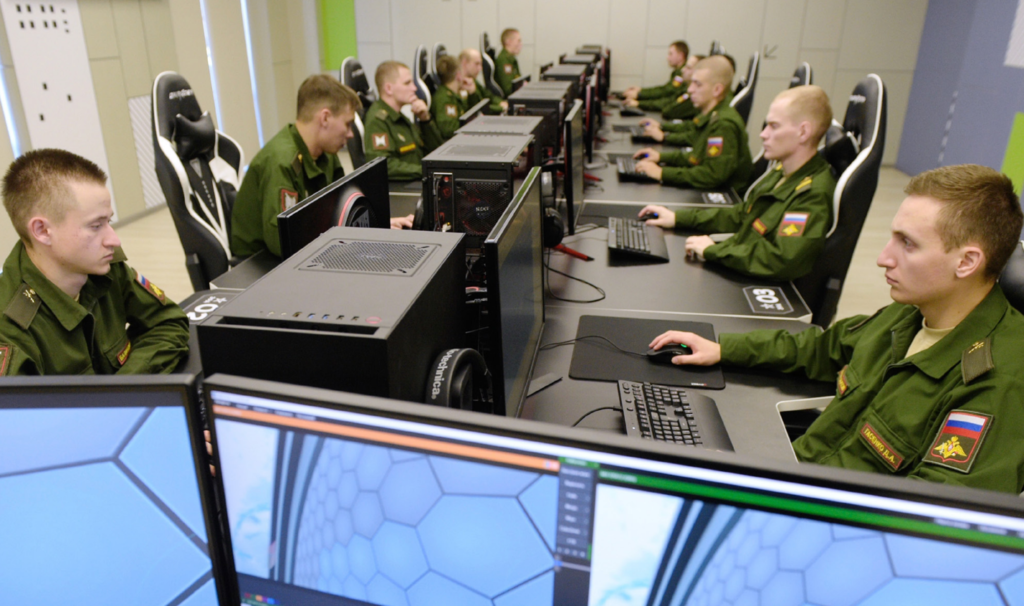Russian Uran-9 combat unmanned ground vehicle © Vitaly V. Kuzmin/vitalykuzmin.net
A high degree of state control, cutting-edge investments in AI and robotics and close connection to the battlefields in Syria and Ukraine. These are some of the lessons learned from a study of Russian military research presented in the report Russia’s Military R&D Infrastructure – A Primer.
This investigation into how Russian military research is organised was conducted by Johan Engvall, at FOI (Swedish Defence Research Agency), on behalf of the Swedish Ministry of Defence.
“The Russian military research infrastructure covers the entire chain, from research to development and production,” says Johan Engvall, a deputy research director in FOI’s Defence Analysis Division, in Kista.
Three types of organisations are engaged in research and development.
“Firstly, there are research institutes that primarily conduct applied research for military purposes. Then, there are the so-called design bureaus, which can be said to be the next link in the chain. They design and develop prototypes that can then go on to production. The third type, scientific production organisations, combines R&D activities with their own production capacity in an effort to streamline and reduce the gap between research and production.”
Overall, there are about 600 different R&D organisations. Since the first decade of this century, the Russian leadership has tried to make this large number more vertically integrated.
“Quite a few institutes and development organisations are part of larger state-controlled holding companies,” says Johan Engvall.
It is complicated to find out exactly how much Russia invests in military research. The figures are part of the defence budget, which is increasingly surrounded by secrecy. What can be deduced is that at least 10 per cent of the defence budget is earmarked for applied research for the needs of national defence.
What are the pros and cons of the military research model that Russia has chosen?
“In this report I haven’t conducted a major assessment, but it is clear that this is an environment characterised by an extremely high level of state control. This also applies to civilian research, where the private sector and the market don’t play the same role as they do in the West. I believe there’s a sense in the Russian system that unless the state sets clear directives, nothing will be produced. This creates a fairly rigid structure.”
Johan Engvall says that there have been ambitions for military research to function as a locomotive for civilian development as well, but that this has proven to be exceedingly difficult.
“Military research operates under certain rules, for example high secrecy, so extensive technology transfer from military to civilian use should probably be seen as rather unrealistic,” he believes.
Such ambitions exist, however. A target has been set for 30 per cent of the products of defence industry companies to have civilian use by the middle of the 2020s, and 50 per cent by 2030. This is because the period of growth in defence procurement is expected to stabilise and in some cases even fall.
The report divides military research into seven main areas, which largely corresponds to the categories used in Russia itself.
“There has been a fairly constant division since Soviet times. A number of newly prioritised areas have been added, which can be said to be organised more horizontally, such as robotics and AI. Breakthroughs in these fields require a lot of basic research, to which funding has been contributed. Russia is investing in certain cutting-edge technologies and among other things has established a military research complex, still under construction, on the Black Sea coast,” says Johan Engvall.

What’s your assessment of how Russian research will develop in the future?
“Together with two colleagues, I am currently conducting a new study that delves into Russian technology development. What we are able to see is that since Russia doesn’t have the same resources as for example the US or China, the government needs to prioritise certain areas.”
This applies above all, says Johan Engvall, to AI and hypersonic systems. Russia previously lagged behind in terms of UAVs, or drones, but has now made substantial progress. Several projects involving autonomous underwater vehicles and unmanned robotic tanks are also underway.
CLOSELY CONNECTED TO REAL BATTLEFIELDS
Russia has the ambition of covering the entire chain from basic research to production within it own defence industry. The reason, among other things, is the deteriorating relations with the West and Russia’s policy of strategic solitude. Because of sanctions, it is not as easy to import certain technologies, which increases the need to be self-supporting and independent in the technology area. A potential bottleneck, however, is that Russia lags behind in the critical electronics industry.
“An interesting aspect is how Russia uses and integrates the real battlefield in the R&D process, both in Syria and Ukraine. Several robotic systems and certain military AI applications have been tested and evaluated there in order to be able to develop them further. By being inventive in this way, Russia might be able to compensate for a lack of resources,” concludes Johan Engvall.
The report : https://www.foi.se/report-summary?reportNo=FOI-R–5124–SE

